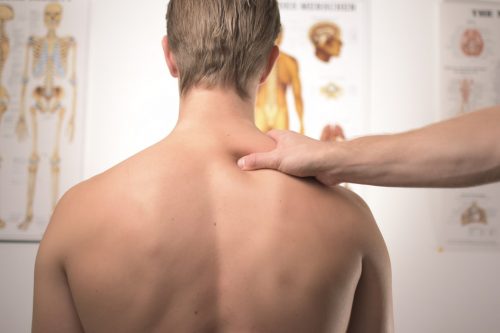What is Scoliosis?
According to the National Scoliosis Foundation, the total number of scoliosis cases in the United States is estimated to be greater than 4 million. Some of you may ask, what is scoliosis? Well, it is an abnormal curvature of the spine and mostly found in school-age children. Even though it is commonly found in school-age children, it can affect adults as well. Adults with this condition are more likely to require long-term care and seek a pain management physician. To fully understand what is scoliosis, you must also understand the different categories and types there are.

A basic definition of scoliosis is when the spine is curved sideways. It is a three-dimensional spine deformity characterized by lateral and rotational curvature of the spine. Instead of forming a straight line, it can form an S or C shape. The many types are classified by cause and age of onset. Even though all forms of scoliosis involve some degree of spinal curvature, some are more severe than others.
Categories of Scoliosis
- Idiopathic: the cause is unknown; no single factor contributes to the development of the disease
- Congenital: a spinal defect present at birth and usually detected at an earlier age
- Neuromuscular: develops secondary to some kind of neurological or muscular disease; progresses more quickly than others
Types of Scoliosis
Within the categories of scoliosis, there are seven different types:
- Congenital Scoliosis: rare and affects only 1 in 10,000 newborns; spinal abnormalities develop in the womb; may result from the partial formation of certain bones or the absence of them
- Early-Onset Scoliosis: when scoliosis is present prior to the age of 10; due to the fact that children under the age of 10 are still growing, it can affect more than just the spine
- Adolescent Idiopathic Scoliosis: the most common form of scoliosis and affects children between the ages of 10 and 18
- Degenerative Scoliosis (De Novo Scoliosis): characterized by a sideways curvature of the spine that develops slowly over time; painful when compared to the other types; caused by age-related degeneration of the spine
- Neuromuscular Scoliosis: develops secondary to various disorders of the spinal cord, brain, and muscular system; curvature occurs when the nerves and muscles are unable to maintain the proper alignment and balance of the spine and trunk; curvature is likely to progress into adulthood
- Scheuermann’s Kyphosis: rounding of the back that arises from disturbances in growth and development; usually diagnosed during adolescence; develops secondary to some structural deformity in the vertebrae; remains fairly consistent and generally does not worsen over time except in some severe cases
- Syndromic Scoliosis: a form of scoliosis that develops secondary to some kind of syndrome; symptoms are not typically painful but can cause discomfort or pain with sitting when severe
Seeking Treatment
Scoliosis can come in many forms and has its own specific treatment. A common form of treatment is using a brace. Wearing a back brace as prescribed can often prevent the progression of scoliosis. It is an effective way to keep the curve relatively small and manageable.
Another form of treatment is occupational therapy. It can help patients lead a more normal, physically active life. It does not assist in straightening the spine but it does prevent the curvature from worsening.
An extreme form of treatment is surgery. This occurs when the curvature continues to worsen. Depending on how severe the procedure was and on your age, it can take weeks or even months to fully recover. With surgery, it can help correct the curve by about 50% to 70%.
Although scoliosis may seem scary, there is really nothing to worry about. Often, no treatment is necessary. In rare cases, surgery is needed. If you or a loved one does have this condition, it is important to understand what is scoliosis. Once you get a better understanding, you will be able to aid them or yourself as well. Read up on more articles, blogs, pamphlets, etc. to learn more if needed!

